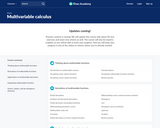
This series of videos focusing on calculus covers parameterizing a surface, surface integrals, stokes' theorem.
- Subject:
- Calculus
- Mathematics
- Material Type:
- Lecture
- Provider:
- Khan Academy
- Provider Set:
- Khan Academy
- Date Added:
- 08/13/2020

This series of videos focusing on calculus covers parameterizing a surface, surface integrals, stokes' theorem.
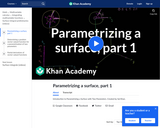
You can parameterize a line with a position vector valued function and understand what a differential means in that context already. This tutorial will take things further by parametrizing surfaces (2 parameters baby!) and have us thinking about partial differentials.

You know what Stokes' theorem is and how to apply it, but are craving for some real proof that it is true. Well, you've found the right tutorial!

Finding line integrals to be a bit boring? Well, this tutorial will add new dimension to your life by explore what surface integrals are and how we can calculate them.
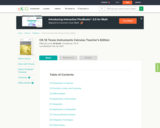
CK-12's Texas Instruments Calculus Teacher's Edition is a useful companion to a Calculus course, offering extra assignments and opportunities for students to understand course material through their graphing calculator.
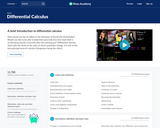
This series of videos focusing on calculus covers calculating derivatives, power rule, product and quotient rules, chain rule, implicit differentiation, derivatives of common functions.
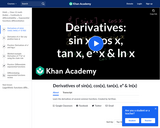
You can take the derivatives of f(x) and g(x), but what about f(g(x)) or g(f(x))? The chain rule gives us this ability. Because most complex and hairy functions can be thought of the composition of several simpler ones (ones that you can find derivatives of), you'll be able to take the derivative of almost any function after this tutorial. Just imagine.
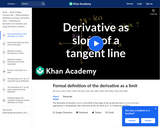
Discover what magic we can derive when we take a derivative, which is the slope of the tangent line at any point on a curve.
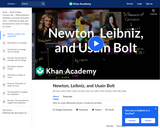
The topic that is now known as "calculus" was really called "the calculus of differentials" when first devised by Newton (and Leibniz) roughly four hundred years ago. To Newton, differentials were infinitely small "changes" in numbers that previous mathematics didn't know what to do with. Think this has no relevence to you? Well how would you figure out how fast something is going *right* at this moment (you'd have to figure out the very, very small change in distance over an infinitely small change in time)? This tutorial gives a gentle introduction to the world of Newton and Leibniz.
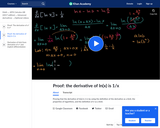
We told you about the derivatives of many functions, but you might want proof that what we told you is actually true. That's what this tutorial tries to do!
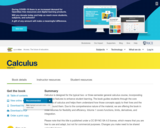
Calculus is designed for the typical two- or three-semester general calculus course, incorporating innovative features to enhance student learning. The book guides students through the core concepts of calculus and helps them understand how those concepts apply to their lives and the world around them. Due to the comprehensive nature of the material, we are offering the book in three volumes for flexibility and efficiency. Volume 1 covers functions, limits, derivatives, and integration
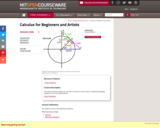
This online textbook provides an overview of Calculus in clear, easy to understand language designed for the non-mathematician.

Our writing is based on three premises. First, life sciences students are motivated by and respond well to actual data related to real life sciences problems. Second, the ultimate goal of calculus in the life sciences primarily involves modeling living systems with difference and differential equations. Understanding the concepts of derivative and integral are crucial, but the ability to compute a large array of derivatives and integrals is of secondary importance. Third, the depth of calculus for life sciences students should be comparable to that of the traditional physics and engineering calculus course; else life sciences students will be short changed and their faculty will advise them to take the 'best' (engineering) course.
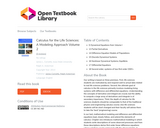
Our writing is based on three premises. First, life sciences students are motivated by and respond well to actual data related to real life sciences problems. Second, the ultimate goal of calculus in the life sciences primarily involves modeling living systems with difference and differential equations. Understanding the concepts of derivative and integral are crucial, but the ability to compute a large array of derivatives and integrals is of secondary importance. Third, the depth of calculus for life sciences students should be comparable to that of the traditional physics and engineering calculus course; else life sciences students will be short changed and their faculty will advise them to take the 'best' (engineering) course.
In our text, mathematical modeling and difference and differential equations lead, closely follow, and extend the elements of calculus. Chapter one introduces mathematical modeling in which students write descriptions of some observed processes and from these descriptions derive first order linear difference equations whose solutions can be compared with the observed data. In chapters in which the derivatives of algebraic, exponential, or trigonometric functions are defined, biologically motivated differential equations and their solutions are included. The chapter on partial derivatives includes a section on the diffusion partial differential equation. There are two chapters on non-linear difference equations and on systems of two difference equations and two chapters on differential equations and on systems of differential equation.
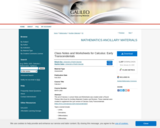
This set of Calculus 1 Lecture Notes and Worksheets was created under a Round Thirteen Mini-Grant for Ancillary Materials Creation and Revision. These materials were created to supplement the Lyrix version of Calculus: Early Transcendentals (https://lyryx.com/calculus-early-transcendentals/).
Topics covered include:
Limits;
Derivatives;
Differentiation;
Differentials;
Integrals and Integration.
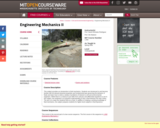
This subject provides an introduction to fluid mechanics. Students are introduced to and become familiar with all relevant physical properties and fundamental laws governing the behavior of fluids and learn how to solve a variety of problems of interest to civil and environmental engineers. While there is a chance to put skills from Calculus and Differential Equations to use in this subject, the emphasis is on physical understanding of why a fluid behaves the way it does. The aim is to make the students think as a fluid. In addition to relating a working knowledge of fluid mechanics, the subject prepares students for higher-level subjects in fluid dynamics.

This open-source book by Crowell, Robbin, and Angenent is a spin-off of a previous open-source book by Robbin and Angenent. It covers the first semester of a freshman calculus course.

A rigorous introduction designed for mathematicians into perturbative quantum field theory, using the language of functional integrals. Basics of classical field theory. Free quantum theories. Feynman diagrams. Renormalization theory. Local operators. Operator product expansion. Renormalization group equation. The goal is to discuss, using mathematical language, a number of basic notions and results of QFT that are necessary to understand talks and papers in QFT and string theory.
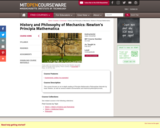
This course focuses on an in-depth reading of Principia Mathematica Philosophiae Naturalis by Isaac Newton, as well as several related commentaries and historical philosophical texts.

This book is an approachable introduction to calculus with applications to biology and environmental science. For example, one application in the book is determining the volume of earth moved in the 1959 earthquake that created Quake Lake. Another application uses differential equations to model various biological examples, including moose and wolf populations at Isle Royale National Park, ranavirus in amphibians, and competing species of protozoa. The text focuses on intuitive understanding of concepts, but still covers most of the algebra and calculations common in a survey of calculus course.